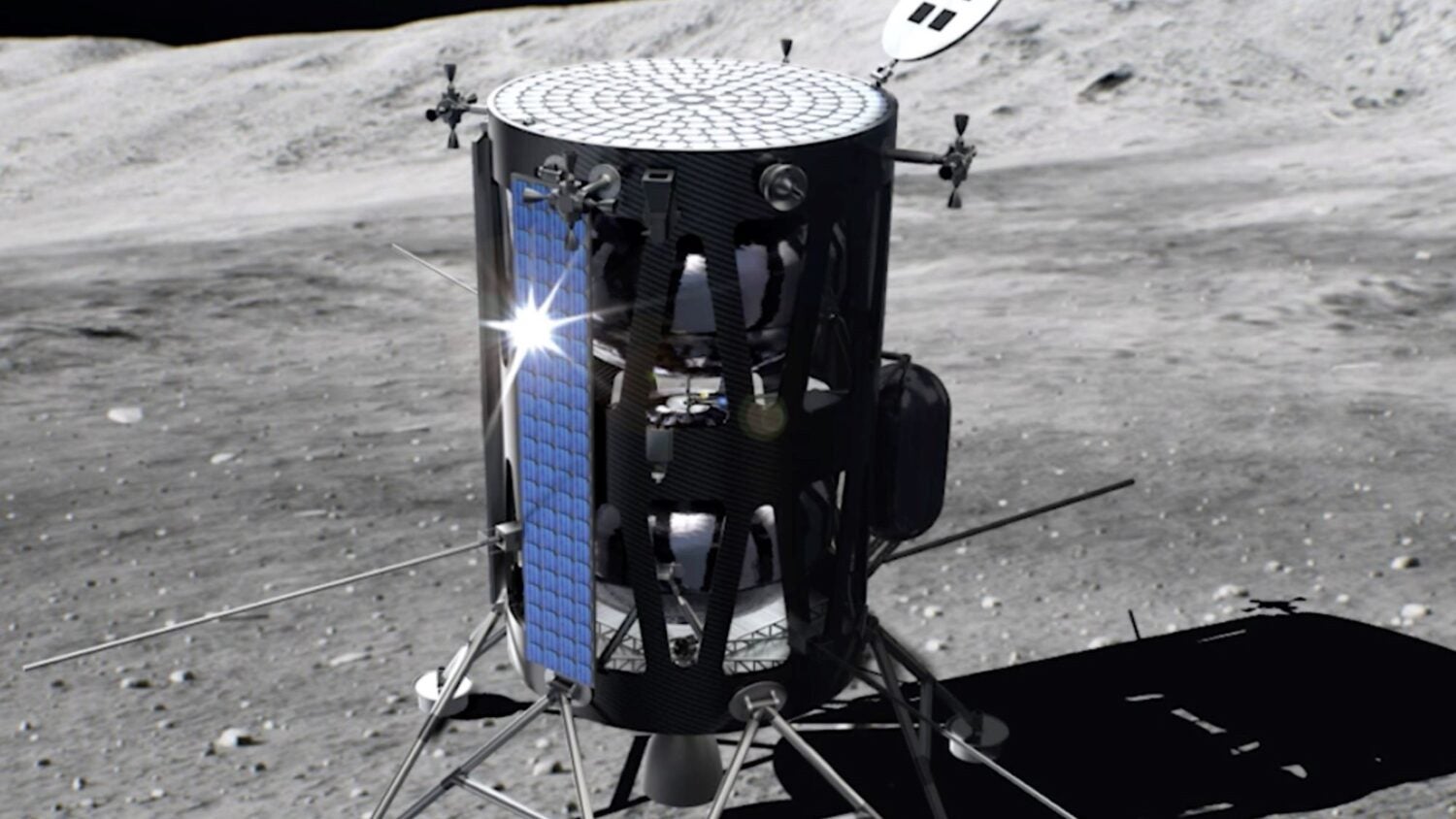NASA plans to return humans to the moon in 2025 with the Artemis III mission. Before that, the space agency will conduct a vital preliminary mission in November 2024, when the Artemis II mission flies a crew of astronauts in lunar orbit for the first time since the 1970s. But the “important first step” toward those goals, as NASA put it in a recent blog post, is the planned launch of the IM-1 mission carrying the NOVA-C lunar lander in a few weeks. It will attempt to land several NASA science experiments near Malapert A, a crater in the southern lunar polar region. Those studies could help NASA prepare for astronaut operations in the area in 2025.
Unlike the Artemis missions, though, NOVA-C isn’t a big NASA project. Instead, the truck-sized craft designed to ferry small payloads to the lunar surface was built, and will be operated by, the small Texas-based company Intuitive Machines.
If it succeeds in landing near the lunar south pole, NOVA-C will be the first US soft landing on the moon since the 1970s, and the first ever commercial landing on the moon that hasn’t crashed or failed. So why is a small spacecraft built by a relatively small company a key part of NASA’s big moon program?
“There is a pattern that we have now seen of NASA trying to move to more commercial solutions and services, rather than do it all on their own,” says Wendy Whitman Cobb, a space policy expert and instructor at the US Air Force School of Advanced Air and Space Studies. It’s much like NASA’s Commercial Crew and Cargo programs, which contracted with SpaceX to fly astronauts and supplies to the International Space Station aboard its Dragon space capsules.
[Related: Why do all these countries want to go to the moon right now?]
Now NASA is turning to commercial companies to prepare the way for humanity’s return to the moon. Intuitive Machines was one of the first companies to receive a contract—for $77 million— under NASA Commercial Lunar Payload Services, or CLPS program, back in 2019. NASA designed CLPS to fund private sector companies interested in building small, relatively inexpensive spacecraft to fly experiments and rovers to the moon, allowing NASA to simply purchase room on the spacecraft rather than developing and operating it themselves.
 An illustration of Intuitive Machines’ NOVA-C lander on the lunar surface. Intuitive Machines/NASA
An illustration of Intuitive Machines’ NOVA-C lander on the lunar surface. Intuitive Machines/NASA
In the case of NOVA-C, five NASA payloads will ride along with devices from universities including Louisiana State and Embry-Riddle Aeronautical University. ”The NASA payloads will focus on demonstrating communication, navigation and precision landing technologies, and gathering scientific data about rocket plume and lunar surface interactions, as well as space weather and lunar surface interactions affecting radio astronomy,” the space agency wrote in a blog post about the mission.
“We don’t still don’t know a lot about the moon,” Whitman Cobb adds. The moon has variable gravity depending on where there are more metallic materials. “Finding out where those places are, how lunar dust is going to kick up when you’re trying to land or take off—all of these things are really key.”
That’s why NASA is sending payloads to ride along with NOVA-C. But the reason NOVA-C is landing where it is, about 300 kilometers from the south pole, has more to do with how the whole world is now thinking about the moon.
NOVA-C was originally destined to land in the Oceanus Procellarum, one of the large, dark areas known as mares, or “seas,” on the lunar surface. But in May, NASA and Intuitive Machines announced the change in plans and the new target near the south pole.
[Related: We finally have a detailed map of water on the moon]
”The decision to move from the original landing site in Oceanus Procellarum was based on a need to learn more about terrain and communications near the lunar South Pole,” NASA announced in a blog post at the time. “Landing near Malapert A also will help mission planners understand how to communicate and send data back to Earth from a location that is low on the lunar horizon.”
The reasons NASA wants to land near the lunar south pole with Artemis, and why the recent and successful Chandrayaan 3 mission of India, and the failed Russian Luna 25 mission, both targeted the lunar south pole are twofold: research and resources, according to Richard Carlson, a lunar geologist who retired from the Carnegie Institute for Science in 2021.
“Both north and south polar regions have permanently shadowed craters where water has been detected from orbit,” he says. ”The real question is whether that water is a one micron surface coating of water on a few grains, or whether it’s a substantial abundance of water. Water of course being useful for a lot of things, from drinking water to turning it into hydrogen and oxygen, which is rocket fuel.”
The other motivation for going to the south pole is that it’s geologically very different from where the Apollo missions landed, according to Carlson. “They all landed on a pretty small portion of the moon on the Earth facing side of the moon on the nice flat mares, and that’s a rather unusual part of the moon geologically,” he says. ”If you think of studying the Earth this way, the Apollo lunar program would have basically landed on, let’s say, just North America, and that’s it.”
The lunar south polar region is much more geologically varied, with tall mountains and ridges, as well as rocks dug out from deep within the moon and scattered over the region by impact craters billions of years ago, Carlson says. But of course, such a landscape has its downsides for spacecraft coming from Earth.
“You look at the pictures of the places that they selected [for Artemis III] and I wouldn’t want to land there. I mean, they’re really rough,” he says. “If we land on a rock, the spacecraft is going to fall over.” Sending small, uncrewed craft like NOVA-C to the moon’s south polar ahead of Artemis astronauts will test how difficult landing there really is.
After all, as Witman Cobb notes, touching down anywhere on the moon is really hard. Before the failed Luna 25 landing on August 21, there were two failed commercial lunar landings. The Israeli company SpaceIL saw its Beresheet lander crash land in 2019, while the Hakuto-R M1 lander from Japanese company ispace crashed in April.
”We haven’t seen a commercial company be successful in landing on the moon yet,” Whitman Cobb says. ”That’s really fascinating when you think about our capability of landing humans on the moon in the 1960s, and 1970s. That today, with all of the technology that we now have, this is still a really, really difficult thing to do.”
>>> Read full article>>>
Copyright for syndicated content belongs to the linked Source : Popular Science – https://www.popsci.com/science/nova-c-moon-south-pole/































